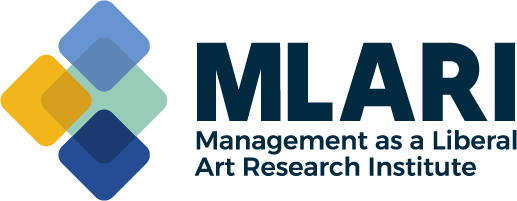If You Don’t Know, Ask Your Brain
PUBLISHED:
Drucker developed five written questions which he recommended that managers ask in developing their businesses. As time went on, Drucker and others added additional questions to the original five. Clearly the number of questions is infinite though some are more or less important depending on the situation. But most important is how you ask to get an answer that is usable.
Questions Most Effective When You Ask Your Computer Directly
I realized that it was effective for the manager to ask the questions because the manager owns the best computer available, that portable computer each of us carries around known as the human brain. You have already accumulated valuable data on this computer to solve all kinds of problems -you just have to access it properly.
The Best Computer Requires Proper Use
I wasn’t surprised when I was introduced to Drucker’s use of the brain because for many years, I had asked myself questions and received answers. I would not have thought of most answers if I hadn’t asked myself these questions. I stumbled on this method years earlier, and it had already played an important role in my life. When I was 14 years old my distance vision suddenly declined. My father was an Air Force officer, and I was examined by an experienced flight surgeon who declared that it was nothing serious merely that I needed eyeglasses. After my examination and receiving the prescription for the glasses, I told him that I didn’t care that I wore glasses, but that I wanted to go to West Point and fly in the Air Force. This doctor immediately advised me to forget these goals and pursue some other career as I would never be able to meet the vision requirements for either objective. Both had strict visual requirements without glasses. He added that he had seen this happen with dozens of youngsters who wanted to attain these ambitions. Even as he spoke, without my speaking aloud, and without thinking I asked my brain what I should do. I was surprised to receive an immediate reply, and I assumed that I had done something right. This occurred even as the doctor continued to talk and explain that it was impossible for me to meet the West Point and Air Force vision standards without glasses and this disqualified me. He suggested that I apply to a local college when I became 17 and join the Air Force through ROTC, requesting one of the non-flying specialties which the Air Force had need of and forget West Point or flying. Meanwhile my brain had silently repeated its explicit advice: “Go to the base library and find a book which explains sight without glasses.”
I had never seen or heard of such a book, but my brain clearly had. I said nothing to the flight surgeon who was only trying to save me from the wasted effort of pursuing what he saw as an unattainable career because of my poor vision. However, as soon as I left the doctor’s office I went straight to the base library. With the librarian’s help I located a book which had actually had the title, “Sight without Glasses.” I read the book and wrote to its author, Dr. Harold M. Peppard, an optometrist. I explained my ambitions and why it was necessary that I have good vision without glasses. Dr. Peppard had been trained by an ophthalmologist, Dr. William Bates, who had developed eye exercises for improving vision without wearing glasses. When Dr. Bates died, Dr. Peppard, continued his practice, and wrote the book. He answered my letter at once with additional exercises and suggestions. I did further research. The method was controversial, some even saying it could harm the eyes. However, there were also many success stories in the book, and I began the program as he suggested. I did these eye exercises about an hour a day, every day, after school. My eyesight slowly began to improve. Four years later I passed the tests for West Point including the vision exam. I graduated from West Point and again improved my vision with new exercises and began an Air Force career which included flying several thousand hours in B-52 bombers as a navigator-bombardier and in attack aircraft in combat as an air commando and instructor. Later I even had the good fortune to work with PVH Weems, a famous retired Navy captain, who had graduated from Annapolis in the class of 1914 and was known as the “father of air navigation.” In the 1930s he had taught Charles Lindbergh celestial navigation on the orders of President Roosevelt after Lindbergh had made his famous solo flight from New York to Paris and was looking for new challenges. Weems had recently been recalled from retirement by the Navy to develop a manual means of space navigation and invited my participation.
The Power of the Brain
The power of the human brain is truly amazing, and this was known and used not only by Drucker, but also by such famous scientists as Albert Einstein, and reportedly by others even earlier. Einstein had published four major scientific papers in a single year using these principles and was awarded the Nobel Prize in theoretical physics by communicating with and taking the advice of his brain!
I think that what happened to me was that my question focused my brain on everything it had on file in my memory about vision improvement without glasses that I had missed or forgotten. To this day I don’t know exactly where I heard about “sight without glasses” and still don’t. When I used this method for other purposes in later years, I knew that some “brain instructions” came from my own experience, but also from unknown sources: a course lesson , a professional article, something I’d seen on TV or in a movie, something I read or had heard on the radio, or someone had said offhand. This apparently was stored in my mental computer and released in response to the questions I asked myself. My brain had not explained or discussed the method used by Drs. Bates and Peppard. But it had given me the title of Peppard’s book. Dr. Peppard’s advice, encouragement and instructions did the rest. The process of improving my vision took some months, but when I took the West Point test, I had passed.
Talking to Yourself
Drucker had developed his five questions for the purpose of running a business. However, since I had some experience with the method, I knew it worked and that it could help me to solve other problems. It always helped.
I asked a psychologist about this. He told me that one reason this worked is that my brain already had all the facts necessary for problem resolution stored away in my memory. While these facts could not always be accessed easily, by eliminating various blocks and fears associated with my questioning, the forces preventing an answer dissipated and I could access the information I needed.
Sometimes the pressures and stresses are too great. The problem is either too difficult or the situation is too demanding. Your brain cannot function easily and cannot always present a solution under these conditions. But the brain can work subconsciously, even if the conscious brain can’t. The challenge then is getting to the subconscious. Some say the best way to obtain a solution you don’t have from your brain is just to go to sleep and wake up with the solution after a short nap or a night’s sleep. I’ve seen this work.
Other techniques also work. Thomas Edison, the inventor, was said to have developed and used a technique of sitting quietly in a darkened room and letting his mind wander. Others perform some activity to distract themselves such as playing a game or even physical exercise. Suddenly the solution appeared.
Research professors at Carnegie Mellon University found that getting the subconscious to provide guidance worked if another problem was presented to distract the brain for a short period, while allowing the subconscious mind to continue to work.
Drucker’s use of written questions to ask your brain may be different, but it works, and can be used to solve a variety of problems. Try it and see for yourself!
Useful References
The Art of the Leader, 3rd Edition by William A. Cohen (Pyramid Press, 2018)
Drucker’s Way to the Top by William A. Cohen (LID, 2019)
The Art of the Strategist (audio version) by William A. Cohen (Harper Collins, forthcoming, 2023-24)





